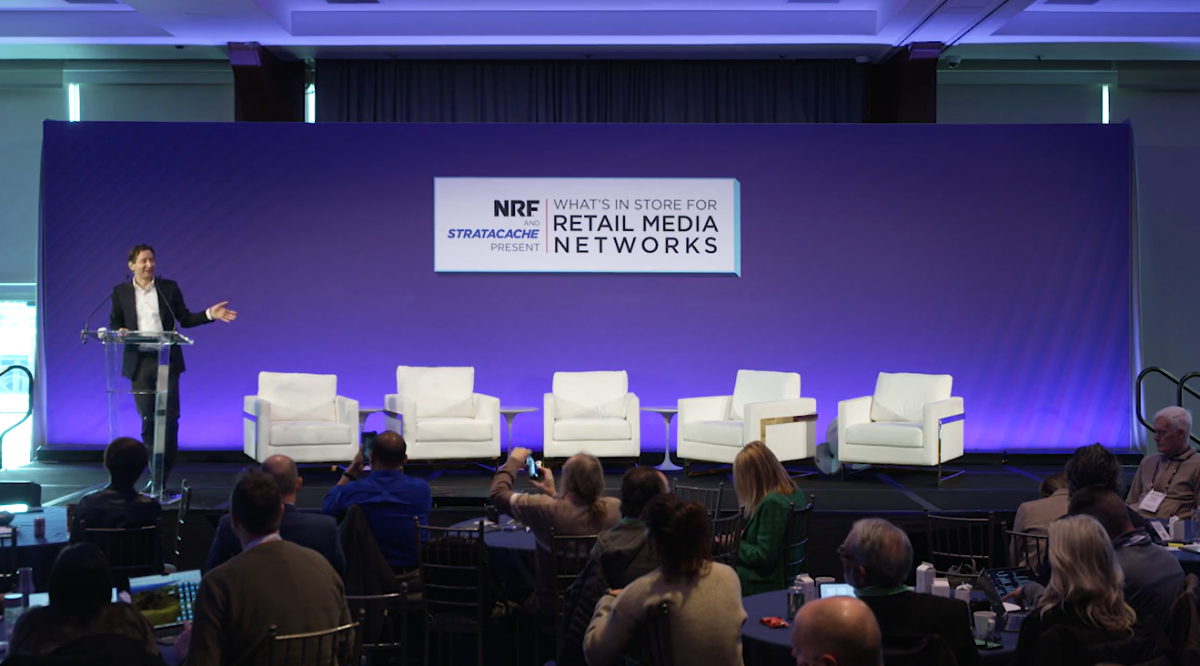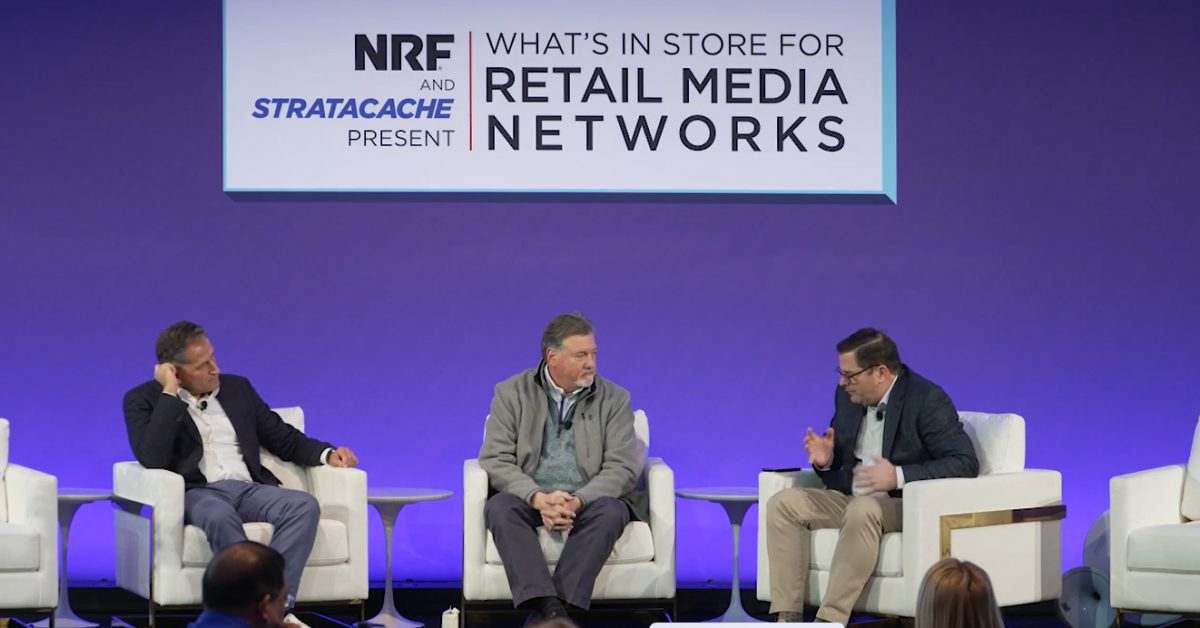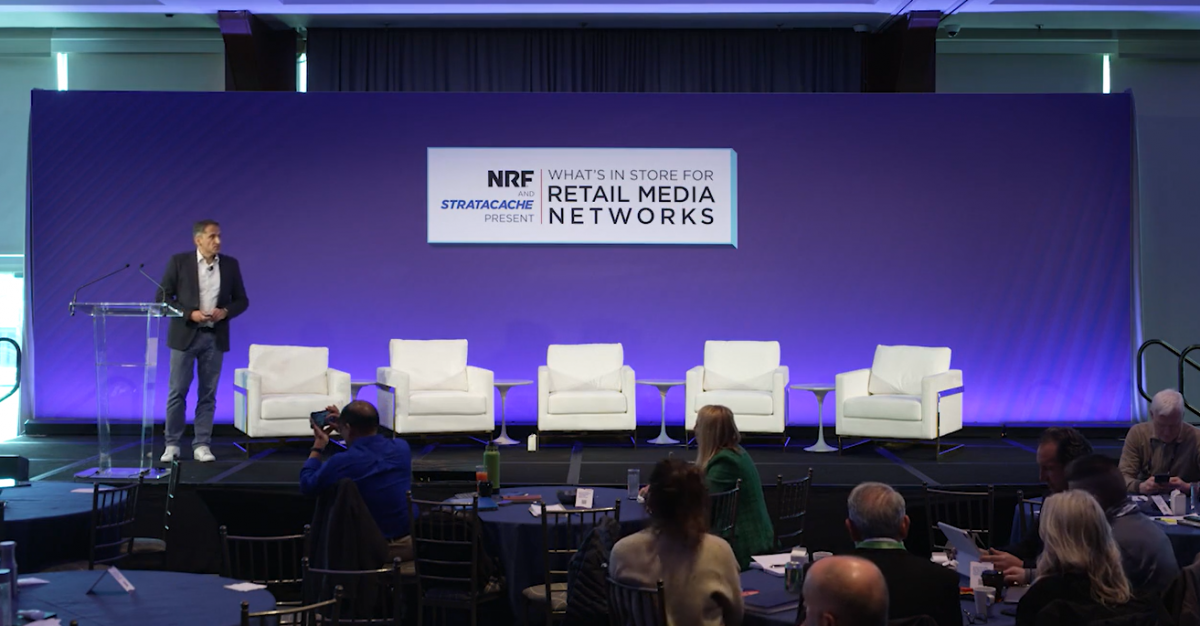From Fragmentation to Opportunity: How Retail Media Networks Are Reshaping Advertising
Retail media networks (RMNs) are rapidly becoming the go-to platform for advertisers looking to reach mass audiences in an increasingly fragmented media landscape. At STRATACACHE’s What’s In Store for Retail Media Networks event, Mark Boidman, Head of Global Media at Solomon Partners, delivered an insightful presentation on how shifting consumer behaviors, technological advances and investment trends are propelling RMNs into the spotlight.
The Challenge: Fragmentation Across Media Channels
Traditional media companies, once the gatekeepers of mass audience reach, are facing immense challenges. The rise of streaming platforms has made it difficult to engage broad demographics through linear television. Even within streaming, consumer fatigue is setting in, with households capping their subscriptions at five or six services. As streaming services struggle with the churn of subscriber turnover and varying profitability, advertisers are looking elsewhere for stable and measurable engagement.
At the same time, media companies are losing ground to tech giants with vast financial resources. These companies are aggressively entering the content space, particularly in sports broadcasting, which has long been the glue holding legacy television networks together. As sports content migrates to digital platforms, traditional TV’s relevance continues to wane.
The Solution: Retail Media and the Power of Commerce Media
Amidst this shifting landscape, retail media and commerce media are emerging as powerful alternatives. Unlike traditional television ads, RMNs provide brands with a way to reach consumers in an environment where purchases are already top-of-mind.
A prime example is Walmart, where advertising now accounts for one-third of its operating income. Boidman noted that retailers are increasingly recognizing the value of selling audience data and advertising space rather than relying solely on product sales. With digital signage and in-store advertising, brands can engage shoppers at the point of purchase, creating a direct link between ad exposure and consumer action.
The Investment Perspective: A Billion-Dollar Opportunity
Investment in RMNs is accelerating, with private equity firms and major retailers funnelling billions of dollars into the space. By 2028, in-store retail media spending alone is expected to surpass $1 billion in the U.S. market, making it a significant slice of the broader $8 billion out-of-home media category.
Agencies and advertisers are taking notice, incorporating RMNs into their media plans as a standard line item. The appeal lies in the ability to track consumer engagement more accurately than in traditional channels. Measurement capabilities, including audience tracking, AI-driven insights, and attribution models, are rapidly improving — further reinforcing the value proposition of in-store media.
The Future: Smart Sensors, AI, and the Evolution of In-Store Advertising
To stay competitive, retailers and advertisers must invest in technologies that enhance the in-store experience. Smart sensors and AI-powered analytics will be essential for creating a seamless, measurable and personalized shopping experience. Boidman emphasised that the future of retail media isn’t just about digitizing stores but about levelling the playing field with online platforms.
Younger generations are accustomed to sharing, comparing, and engaging with digital content in real-time. To capture their attention in physical retail spaces, brands need to create interactive and shareable experiences — bridging the gap between online engagement and offline purchasing.
A Safe Bet in an Uncertain Media Landscape
Unlike legacy media formats such as radio and television, RMNs and out-of-home media are poised for longevity. As investment dollars shift and media consumption habits evolve, one thing remains clear: retail media networks are not just a passing trend — they are the future of advertising.
For businesses looking to navigate this new era, the message from NRF 2025 is clear: Those who embrace in-store media and commerce-driven advertising today will be the leaders of tomorrow.
Watch the full presentation here.








